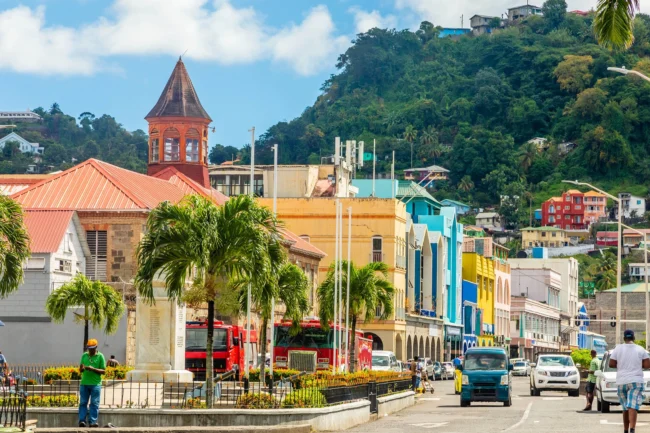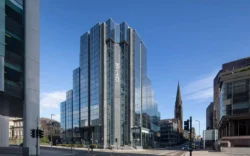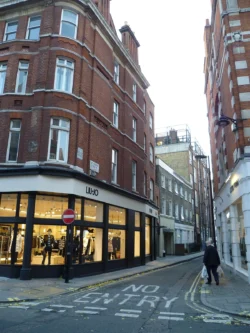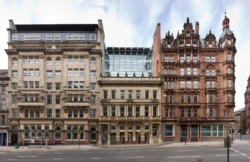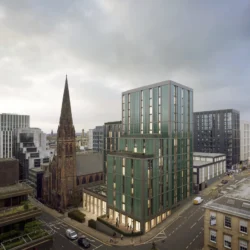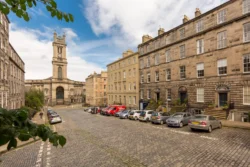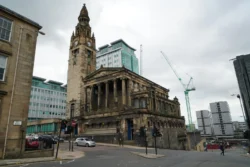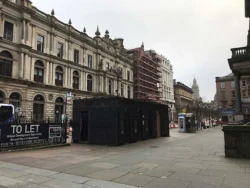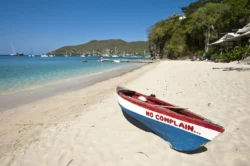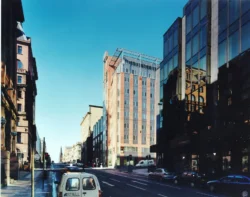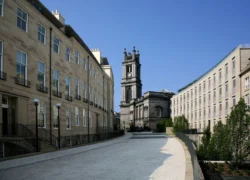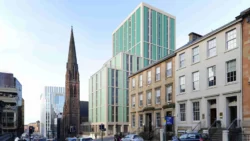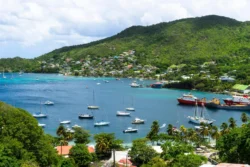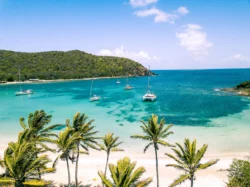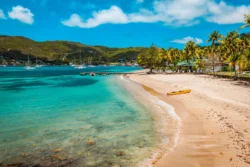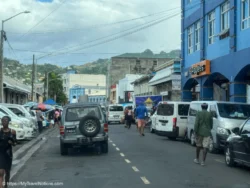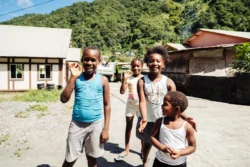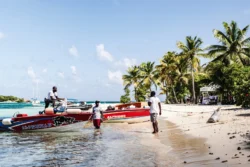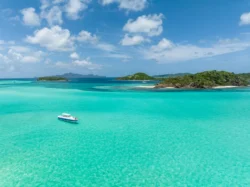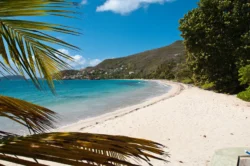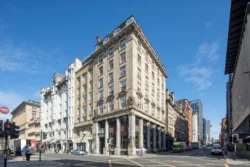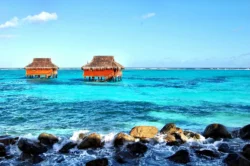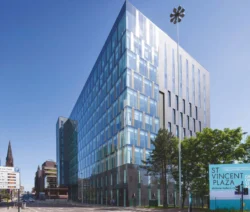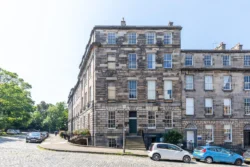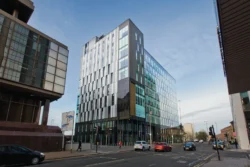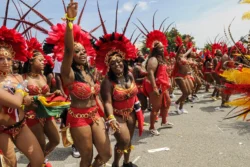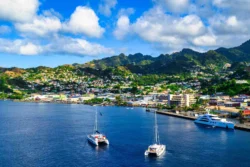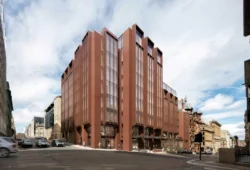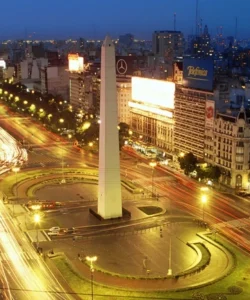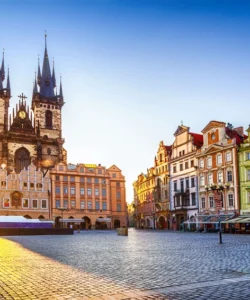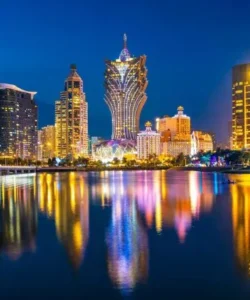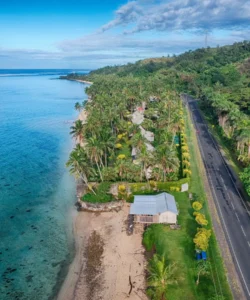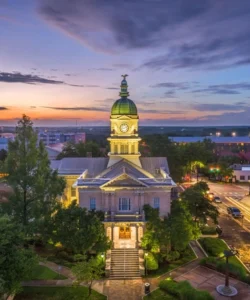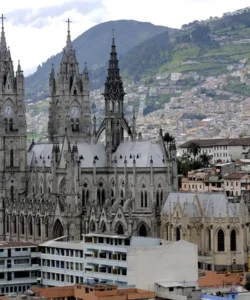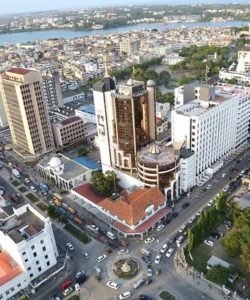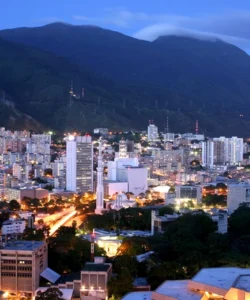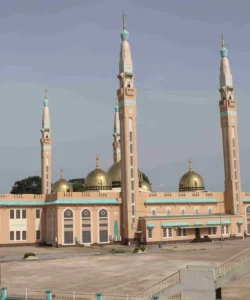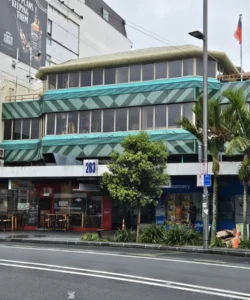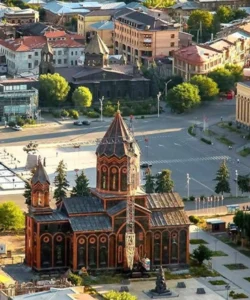Saint Vincent and the Grenadines is an independent island nation in the Lesser Antilles, located in the southern Caribbean Sea. It comprises the larger, main island of Saint Vincent, which is rugged and volcanic with lush rainforests, and a chain of 32 smaller islands and cays known as the Grenadines. The nation is renowned for its natural beauty, pristine waters, excellent sailing, and a more off-the-beaten-path feel compared to some of its more developed neighbors.
Area and Population:
The total land area of Saint Vincent and the Grenadines is approximately 389 sq. km (150 sq. mi). Saint Vincent is the largest island at 344 sq. km (133 sq. mi). As of 2024, the estimated population is around 103,500 people.
Language:
The official language is English. Vincentian Creole, an English-based Creole dialect, is also widely spoken by locals.
Currency:
The official currency is the Eastern Caribbean Dollar (XCD), which is pegged to the US Dollar at EC$2.70 to US$1.00. The United States Dollar (USD) is also widely accepted in tourist areas.
Religion:
The predominant religion is Christianity, with various Protestant denominations (Anglican, Methodist, Pentecostal, Seventh-Day Adventist) being the most common, alongside Roman Catholicism.
Capital:
The capital city of Saint Vincent and the Grenadines is Kingstown, located on Saint Vincent. It is the largest town and the main commercial center.
Major Islands/Towns:
Besides Kingstown, other significant towns include Georgetown on Saint Vincent. In the Grenadines, major islands with settlements include Bequia (Port Elizabeth), Mustique, Canouan, Union Island (Clifton), Mayreau, and Palm Island.
Attractions:
Saint Vincent and the Grenadines offer a wealth of natural beauty and outdoor adventures:
- La Soufrière Volcano (Saint Vincent): The active stratovolcano dominates the northern part of Saint Vincent. Hiking to its crater rim is a challenging but rewarding experience, offering stunning views (conditions permitting, as it has had recent eruptive activity).
- Dark View Falls (Saint Vincent): Two spectacular waterfalls cascading into natural pools, accessible via a bamboo bridge and a short hike through lush rainforest.
- Falls of Baleine (Saint Vincent): A remote and stunning waterfall accessible only by boat, offering a unique wilderness experience.
- Montreal Gardens (Saint Vincent): Beautiful terraced gardens showcasing a wide variety of tropical plants, offering tranquility and scenic views.
- Tobago Cays Marine Park (The Grenadines): A breathtaking cluster of uninhabited islets, coral reefs, and shallow turquoise waters, renowned as a premier destination for snorkeling, diving, and yachting. It’s famous for its abundant sea turtles and vibrant marine life.
- Bequia: The largest of the Grenadines, known for its strong maritime heritage, charming Port Elizabeth, beautiful beaches (like Lower Bay and Princess Margaret Beach), and laid-back atmosphere.
- Mustique: An exclusive private island retreat, famous for its luxurious villas and celebrity visitors, offering secluded beaches and high-end privacy.
- Union Island: A hub for yachting and kitesurfing, known for its vibrant town of Clifton and scenic views.
- Salt Whistle Bay (Mayreau): A picturesque crescent-shaped beach fringed with palm trees, offering calm waters perfect for swimming and snorkeling.
- Palm Island: A small, exclusive private island resort accessible by boat from Union Island.
Natural Wonders:
The nation’s natural wonders are diverse and striking:
- Volcanic Landscapes: Dominant on Saint Vincent, including the active La Soufrière.
- Lush Rainforests: Covering much of Saint Vincent, home to numerous rivers and waterfalls.
- Pristine Coral Reefs: Abundant throughout the Grenadines, forming vibrant underwater ecosystems.
- Uninhabited Cays: The Tobago Cays are a prime example of unspoiled Caribbean beauty.
Architecture:
Saint Vincent and the Grenadines’ architecture reflects its British colonial past, with adaptations to the Caribbean climate and some modern influences.
- Colonial (Kingstown): The capital features historic stone and brick buildings, some with Georgian influences, narrow streets, and the iconic St. George’s Cathedral.
- Vernacular Houses: Throughout the islands, you’ll find charming wooden homes, often painted in bright colors, with verandas and louvered windows designed for natural ventilation.
- Plantation Houses: Some remaining structures from the sugar and arrowroot plantation era, particularly on Saint Vincent.
- Resort Architecture (Grenadines): On islands like Mustique and Palm Island, the architecture tends to be luxurious and integrated with the natural landscape, focusing on open-air living and maximizing views.
Roads:
Saint Vincent has a more extensive road network, with paved roads along the coast connecting major towns. However, roads can be very winding, steep, and narrow, especially in the interior and mountainous regions. Driving is on the left-hand side of the road. Roads on the Grenadine islands are generally less developed, with some unpaved sections. Water taxis and inter-island ferries are crucial for transport between the Grenadines and from Saint Vincent. Minibuses are the primary form of public transport on Saint Vincent.
Hotels:
Accommodation options vary from large resorts on Saint Vincent to exclusive luxury properties in the Grenadines, as well as charming boutique hotels and guesthouses.
- The Liming Bequia (Bequia): A luxury boutique hotel with private villas.
- Bequia Beach Hotel (Bequia): A popular luxury resort on Friendship Bay.
- Palm Island Resort (Palm Island): An exclusive all-inclusive private island resort.
- Canouan Estate Resort & Villas (Canouan): A high-end resort with a golf course.
- Young Island Resort (off Saint Vincent): A small, private island resort just a short boat ride from Saint Vincent.
- Boutique hotels and guesthouses: Numerous options, especially in Port Elizabeth (Bequia) and Kingstown.
Restaurants:
The culinary scene in Saint Vincent and the Grenadines emphasizes fresh seafood, local produce, and a blend of African, Creole, and British influences.
- Jack’s Beach Bar (Bequia): A popular beachfront spot on Princess Margaret Beach, known for its fresh seafood and relaxed ambiance.
- Laura’s Bar & Restaurant (Port Elizabeth, Bequia): Offers authentic local cuisine in a casual setting.
- Basil’s Bar (Mustique): A legendary open-air bar and restaurant, famous for its lively atmosphere, live music, and celebrity sightings.
- Flowt Beach Bar & Restaurant (Kingstown, Saint Vincent): A casual spot with waterfront views and local dishes.
- Churches and street vendors: Offer opportunities to sample local street food and traditional dishes.
- Many hotels and resorts also feature their own restaurants, often with international and local menus.
Cuisine:
Vincentian cuisine is flavorful and hearty, based on fresh seafood, local root vegetables, and spices.
- Roasted Breadfruit and Fried Jackfish: Often considered the national dish. Breadfruit is roasted or boiled and served with freshly caught fried jackfish.
- Fish and Chips (Local Style): Often made with fresh local fish like snapper or mahi-mahi.
- Callaloo Soup: A popular, nutritious soup made from the leaves of the dasheen plant (taro), often with crab or pigtail.
- Curried Dishes: Reflecting Indian influences, with chicken, goat, or vegetables often curried.
- Ducana: A sweet dish made from grated sweet potato, coconut, and spices, wrapped in a banana leaf and steamed.
- Blackfish (or Black Pudding): A type of blood sausage.
- Pelau: A one-pot rice dish with pigeon peas and meat (chicken, beef).
- Fresh Fruits: Mangoes, bananas, guavas, passion fruit, and soursop are abundant.
- Arrowroot: Saint Vincent is a major producer of arrowroot, used in various dishes and products.
- Hairoun Beer: The local beer of Saint Vincent.
- Rum: Locally produced rum is widely available.
